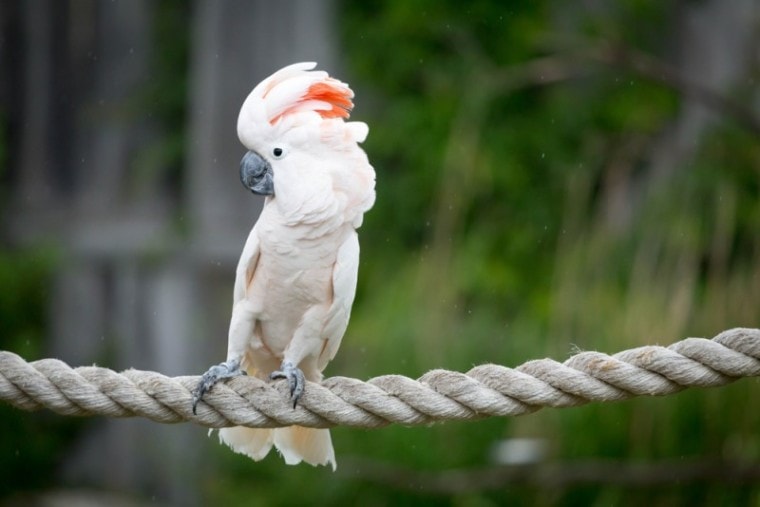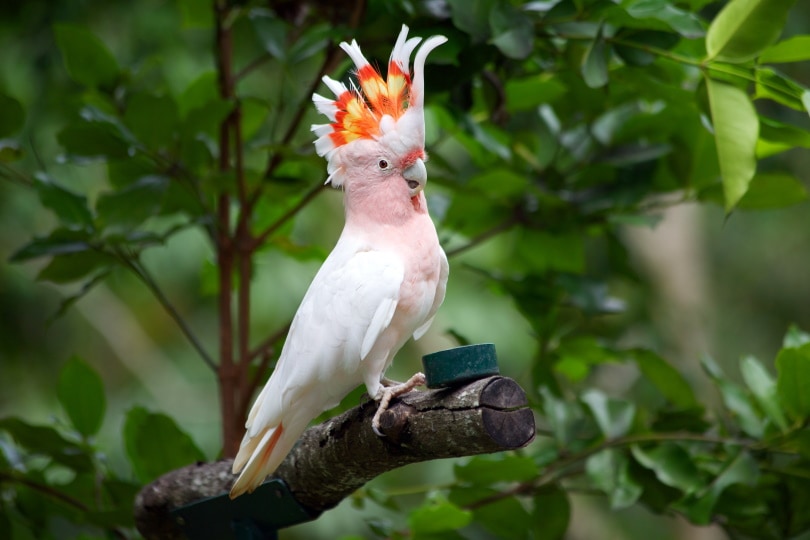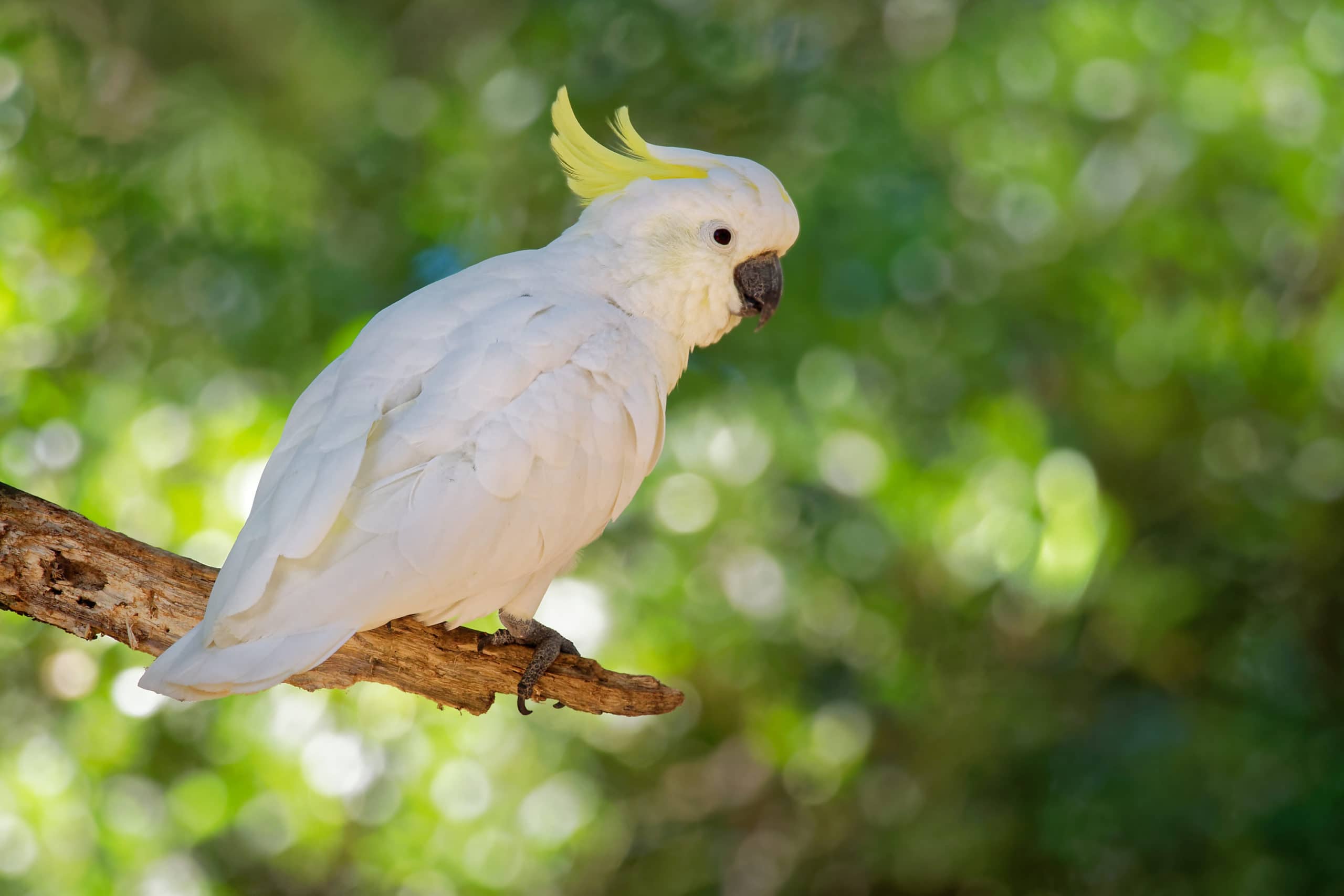
If you know anything about cockatoos, you already know that they are high-maintenance birds. However, they are also funny, lovable, and intelligent. Your cockatoo will need constant contact and care from you as their pet parent, especially when they’re a baby.
It’s difficult to tell a baby cockatoo apart from similar birds when they’re born unless your breeder can confirm the species. The eggs of a cockatoo look like chicken eggs, and the hatchlings tend to look like many other baby birds, so it’s easy to be fooled. Make sure to purchase your baby cockatoo from a reputable breeder so you don’t end up purchasing a bird that isn’t what you thought it was going to be.
Read on for a guide on how to properly take care of a baby cockatoo and a few other things that you might want to know when raising these beautiful birds.
How to Take Care of Your Baby Cockatoo
You’ll need to take care of your baby cockatoo by feeding them, caring for them, and giving them plenty of attention every day to keep them healthy and happy.
When you first bring home your baby cockatoo to introduce them to your family, do so slowly. Too much attention at once in unfamiliar surroundings will upset them. However, cockatoos are social creatures, so once they get used to your family and the environment, they’re going to need attention on a daily basis, sometimes even more often.
A cockatoo isn’t a bird that you can put in a cage with food and only pay attention to occasionally. If you don’t give them enough interaction, they will become loud and self-destructive. Make sure to have plenty of suitable toys for your baby cockatoo as they grow to adulthood for the best results.

What Should You Feed Your Baby Cockatoo?
Your baby cockatoo will need to be fed through a vial for the first month of their life. However, in most cases, baby cockatoos will stay with the breeder until the end of their first month of life, so your little one should be able to eat solid food by the time you bring them home.
It’s best to feed your baby cockatoo specially formulated bird pellets to make sure you’re meeting their nutritional needs. Then, as your pet gets older, you can start feeding them parrot pellets, fruits, and veggies. Make sure to always keep fresh water in a bowl for them to drink.
If you’re unsure what to feed your baby cockatoo or they don’t seem to be taking to the food that you’re giving them, it’s best to make an appointment with your vet for a checkup. They can develop a diet plan that gives your cockatoo the nutrients that they need to be healthy and happy into adulthood and beyond. For example, as they grow into adulthood, some cockatoos prefer leaf buds, insects, or palm leaves to other foods.
It’s important to note that some cockatoos can be picky eaters, so you want to be prepared for that from day one. Also, never feed your baby cockatoo chocolate, alcohol, carbonated drinks, coffee, or avocadoes, as these can be deadly to your bird.

How Often Should You Feed a Baby Cockatoo?
As soon as a baby cockatoo can walk and feed themselves, they can start eating normal food. If you get your baby cockatoo as a neonate, they’re going to need to be fed through a vial for their first month of life. However, very few cockatoo owners purchase a baby cockatoo before they can eat on their own.
You’ll need to keep your bird’s food and water dish full at all times, as they’ll know when they’re hungry and when they’ve had enough to eat. As they grow into adulthood, they will eat when they are hungry, so free feeding is encouraged. The rules to follow are the same when it comes to feeding babies and adult cockatoos.

What Cage Setup and Size Is Best?
The cage size you choose for your baby cockatoo should be the same as you would choose for an adult. The best size is 2 feet wide and 3 feet high, so the cockatoo will have plenty of space to spread their wings.
The cage setup is simple. Once it’s ready, put it in the middle of a room where your family gathers the most. Since your cockatoo is highly social and wants to be with family, this is the best place for them to be.
The Colors of a Baby Cockatoo
Depending on the species, baby cockatoos should have the same exact colors as their adult counterparts. Cockatoo feathers can be black, white, red, grey, silver, pink, yellow, or brown. So, if you see a baby with different colors than the adults, that’s your first clue that it’s probably not the same type of bird.

How Much Does It Cost to Own a Cockatoo?
Depending on the species of cockatoo you’re considering, a baby can cost you between $150 and $15,000 or more. Be warned, however, that if you purchase one on the lower end of the price range, it is possible that the bird will have behavioral problems. Also, the cost of raising a cockatoo is expensive, as they are high-maintenance birds in terms of money, care, and attention needed.
Can Baby Cockatoos Live Together?
It’s widely thought that it’s better to raise a baby cockatoo alone. If you have more than one baby cockatoo, we suggest that you keep them in different rooms and in separate cages, which is the safest method for both you and your birds. Cockatoos in adulthood can live in the same house together, but they still need to be kept in separate cages and in separate rooms if possible.
Conclusion
With their specialized level of care, a cockatoo can overwhelming for a first-time bird owner, especially if they’re a baby. But if you follow this guide, you’ll be able to keep your pet happy and healthy and eventually have a beautiful adult cockatoo companion that will be with you for many years. The thing to remember before you decide to adopt one of these birds as a pet is that they require a great deal of care and attention, so make sure you’re prepared to provide both.
See also:
Featured Image by: Imran Ashraf, Shutterstock








